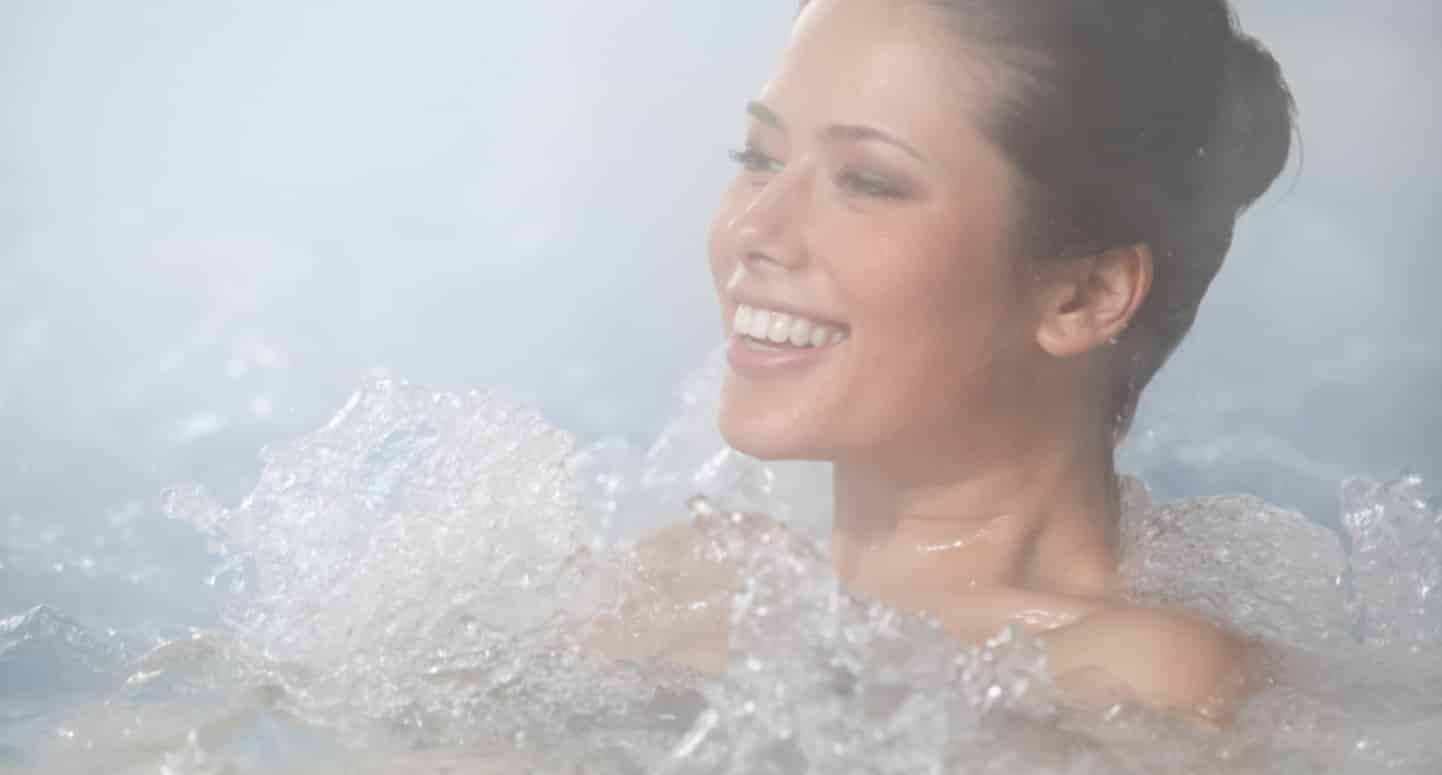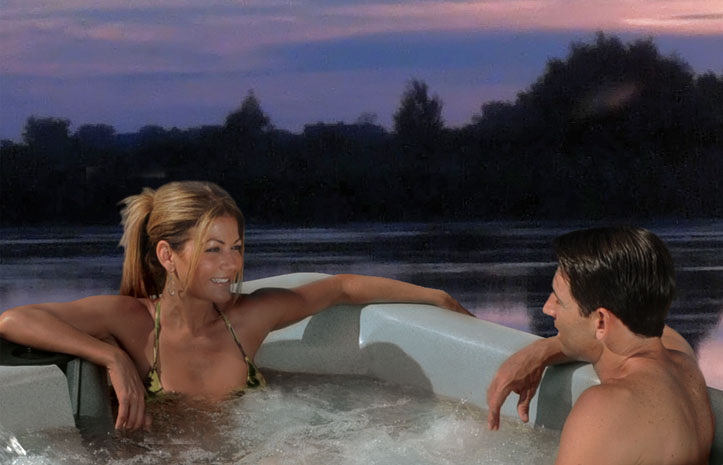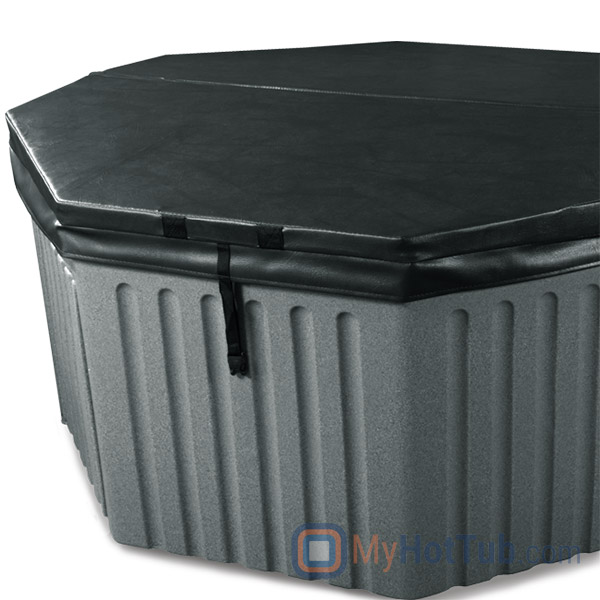
As the owner of a spa, it is important that you maintain your spa water and keep your spa equipment in excellent condition. Doing so will give you years of usage from your hot tub and provide safe and clean leisure time. To do so, you must first balance your spa water. You will need to test and adjust the water chemistry of your spa. Although this is not difficult, it needs to be done regularly. There are 2 types of testing methods to test the water chemistry:
- The reagent test kit is a method which provides a high level of accuracy. It is available in either liquid or tablet form.
- Test strips are a convenient testing method commonly used by spa owners to test water pH levels.
Balancing the Total Alkalinity
Total alkalinity (TA) is the measure of the total levels of carbonates, bicarbonates, hydroxides, and other alkaline substances in the water. Total alkalinity can be considered a pH buffer. It is the measure of the ability of the water to resist changes in pH level.
- The recommended spa total alkalinity is 80 – 120 parts per million (ppm).
- If hot tub alkalinity is too low, the pH level will fluctuate widely from high to low. You can raise alkalinity and adjust alkalinity by adding spa alkalinity increaser (it’s a real thing you can buy).
- If the total alkalinity is too high, it can raise pH levels too high. It can be difficult to adjust pH and bring it down. High alkalinity can be corrected by adding pH decreaser (also real).
- When total alkalinity is balanced, it normally remains stable, although adding water with high or low alkalinity will decrease or increase alkalinity in spas.
Balancing the Calcium Hardness
Calcium hardness (CH) is a measure of the total amount of dissolved calcium in the water. Calcium helps control the corrosive nature of the spa’s water and is why soft water is not recommended. The low calcium content of soft water is very corrosive to the equipment and can cause staining of the spa shell.
- The recommended calcium hardness is 150 – 200 ppm.
- If the CH is too low, add liquid hardness increaser (this one sounds super made up, but is totally real).
- If the CH is too high, dilute the spa water with soft water or, if this is not available, add stain and scale defense (we swear, we’re not making this stuff up).
- When the CH is balanced, it normally remains stable, although adding soft water or very hard water will raise or lower the CH level.
Balancing the pH
The pH level is the measure of the balance between acidity and alkalinity.
- The recommended pH is 7.2 – 7.6.
- Low pH can cause corrosion of metal fixtures and the heating element. You can raise pH in hot tubs with a pH increaser (it’s a real thing).
If the pH is too high, it can cause scaling by allowing metals or minerals to form deposits and stain spa surfaces. Above we mentioned pH increaser for hot tubs, well they also make pH decreaser for lowering pH.
| Too alkaline: causes scaling. | 8.2 | ⇓ | Decrease the pH level. |
| 8.0 | |||
| 7.8 | |||
| Ideal balance. | 7.6 | ||
| 7.4 | |||
| 7.2 | |||
| Too acidic: causes corrosion. | 7.0 | ⇑ | Increase the pH level. |
| 6.8 | |||
| 6.6 |
What’s “Ozone”?
Chemically known as O3, it is produced from simple oxygen molecules in our atmosphere. Ozone is produced in nature from lightning during electrical storms and from ultraviolet rays from the sun. It forms Earth’s protective layer. Your spa’s ozone generator is designed to duplicate this natural sanitizer. Ozone breaks down and oxidizes oils, suntan lotions, sweat, urea, etc. from spa water more effectively than commercial oxidizers. Working with chlorine or bromine systems in your spa, ozone destroys bacteria and viruses and will do so more effectively. Ozone only leaves simple oxygen in the water as a by-product.
If your spa is equipped with an ozone generator it will automatically produce ozone, but it cannot be used as the sole means of maintaining safe spa water. You must select and use a spa chemical sanitizer in addition to your ozone generator. The ozone generator is a wearable, non-warranty item and it needs to be replaced approximately every 2 years.
Sanitation
You will need to decide which chemical sanitizer you wish to use, regardless of the presence of an ozonator. Spa owners with an ozonator still need to use a chemical sanitizer. Sanitizers kill bacteria and viruses and keep the water clean. A low sanitizer level will allow microbes to grow quickly in the spa water. Use either bromine or chlorine as your sanitizer or a non-chlorine/non-bromine sanitizer. Either works well when maintained regularly. Consult your spa dealer for the right decision with regards to your lifestyle and spa usage. Important: Read and follow all chemical manufacturers’ guidelines for usage and safety.
If Using Chlorine as a Sanitizer
- Do not use Tri-chlor tablets or liquid chlorine.
- Once a week, check the chlorine level using either a test strip or a reagent kit. Refer to product for the ideal range.
- Monitor chlorine levels of the spa water weekly. Note that chlorine dissipation rate will be faster at higher water temperatures and slower at lower temperatures.
- When you add chlorine, make sure no bathers are in the spa, open all jets and run the spa at high speed with the cover open for at least 30 minutes.
If Using Bromine as a Sanitizer
- Bromine is a very effective sanitizer that produces low chemical odors. Unlike chlorine, it can break down bacteria and other impurities to a safe level with a low burn-out rate. See bromine system labeling for usage.
Shocking the Water
- In addition to using a chemical sanitizer, you may need to shock the water. Shocking the water helps remove burned-out chemicals, bacteria, and other organic material from your spa’s water and improves your sanitizer’s effectiveness.
- Do not use chlorinating shock, which will damage your spa’s jets and pump seals. Only use an oxidizer shock. It is an easy way to maintain chemical plans.
For best results, add oxidizer shock:
- If sanitizer level temporarily reads low
- After heavy bather loads
- If water has a strong odor
The spa must be running with all of the jets on high for 30 minutes with the cover open. If necessary, repeat oxidizer shock in 30-minute intervals.
Important Chemical Safety
Read and follow all printed instructions listed on bottles and packages. Failure to follow chemical directions may result in serious injury, sickness, or even death.
- Never add chemicals while bathers are in the spa!
- Do not exceed chemical dosages as recommended on chemical bottles and packages.
- Never change chemical brands or types without completely draining, flushing and thoroughly cleaning the spa and cover first.
- Never mix chemicals together.
- Do not allow chemicals to come in contact with skin, eyes or clothing. Remove and wash clothing that may have been exposed to chemical contact prior to wearing them again.
- Inhaling or ingesting chemicals will cause serious injury, sickness, or even death.
- Chemicals must be stored completely out of the reach of children in an area that is well vented, cool, and dry. Failure to provide a proper area for chemical storage may result in serious injury, sickness, fire, explosion and even death. Do not store your chemicals inside the equipment area of your spa.
- Add chemicals to the center of the spa with the pump running.
- Make sure the water is heated. Never add chemicals to cold water, as this will affect chemical action.
- Never add chemicals to the skimmer.
Conclusion
We covered a lot of information in this article like pH vs alkalinity, how to increase alkalinity in hot tubs, calcium hardness, sanitation, and more. It’s a lot to take in. Taking care of a hot tub and mastering water chemistry can be more work than some people realize. As complicated as it gets, it’s not impossible. There’s thousands of spa owners out there that can add hot tub care to their resumes. You too can master it with practice and own a clean hot tub.
Our owner’s manual contains more information on hot tub maintenance and can be accessed and downloaded anytime. If you ever have any questions about water chemistry, alkalinity vs pH, how to raise alkalinity in hot tubs, or any other hot tub questions, our Customer Service team is happy to help anytime. We have a staff of hot tub experts that wants to help you understand your hot tub and get the most out of it.


